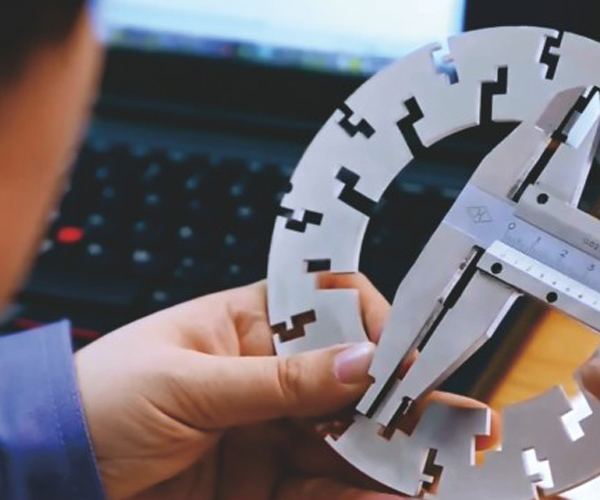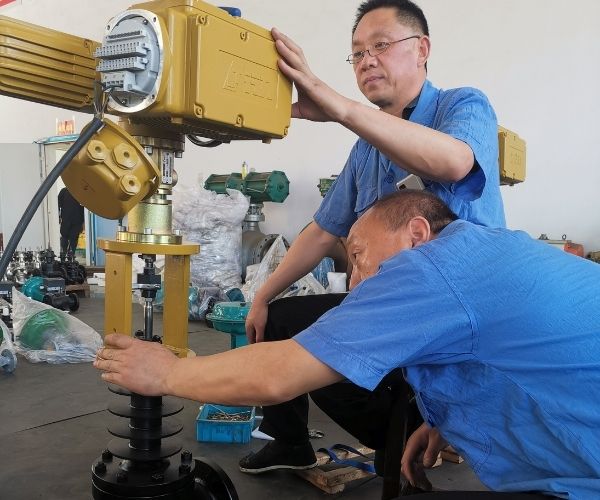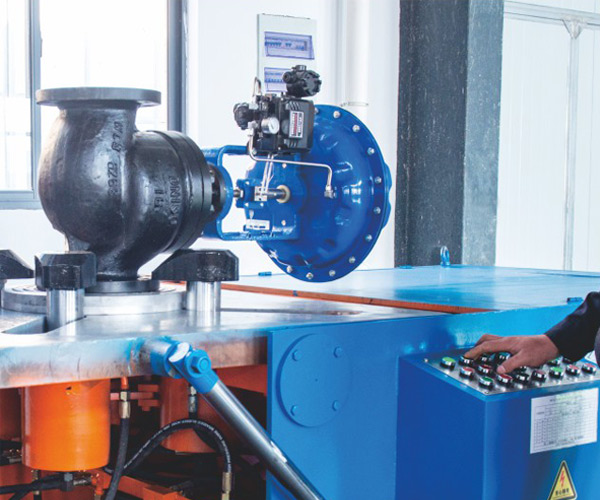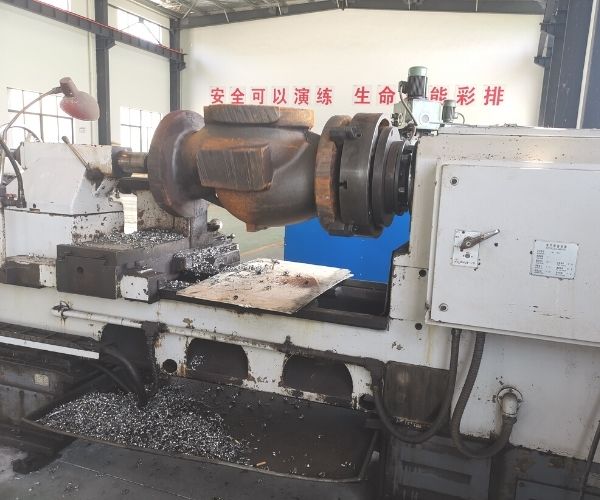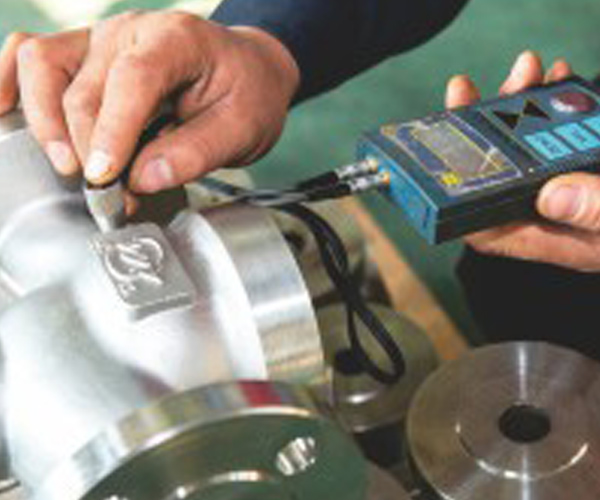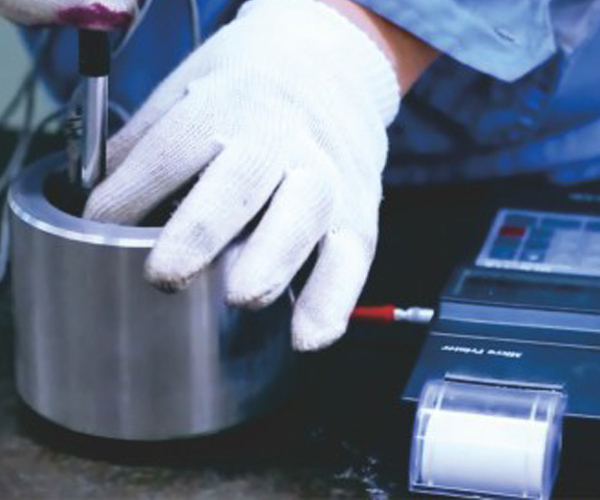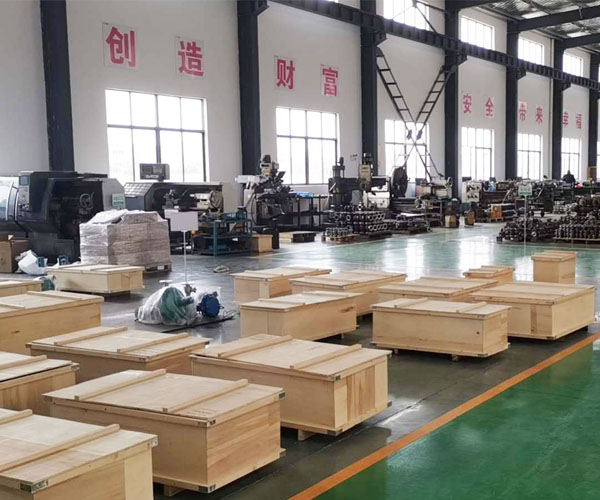Professional Pneumatic Actuated Valve Manufacturer
●High pressure and pace of movement.
●High durability.
●High reliability.
●Clean technology.
●Cost-effective.
●High excellent.
Get in Touch with Us
BCST your Expert Pneumatic Actuated Valve Supplier in China
BCST pneumatic actuated valve rely upon compressed air or fuel line because the number one electricity source. The actuators do now no longer require a motor however, energy is essential whilst paired with a quintessential solenoid valve that is normally called a pilot valve. A pneumatic actuated valve converts power into mechanical movement. The movement may be rotary or linear, relying on the form of an actuator.
BCST your One-Stop Pneumatic Actuated Valve Solution in China
BCST pneumatic actuated valve is commonly utilized in oil refineries, chemical plants, electricity plants, water treatment, marine terminals, and mining. They are generally crafted from substances like stainless steel, carbon steel, and aluminum. It’s traced via way of means of excellent warranty and is 100% tested, to affirm bendy operation.
Leave us a message for your inquiries at [email protected].
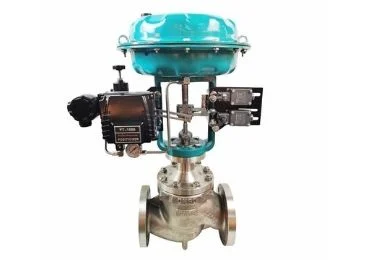
Pneumatic Control Valve
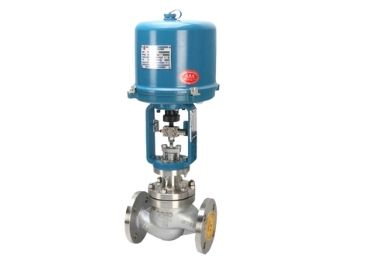
Electric Control Valve
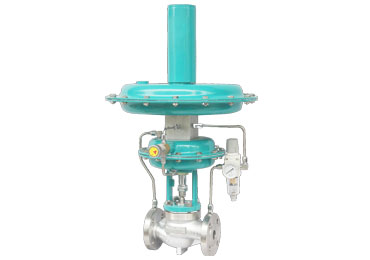
Self Regulating Control Valve
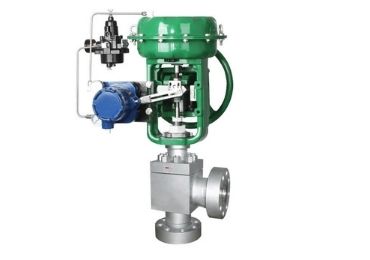
Angle Control valve
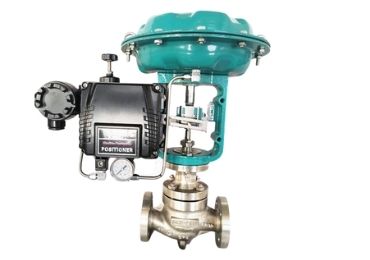
Globe Control Valve
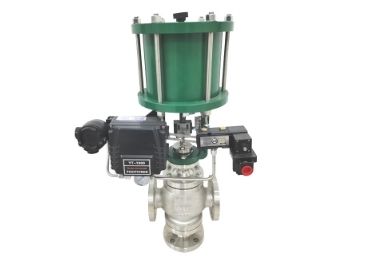
Linear Control Valve
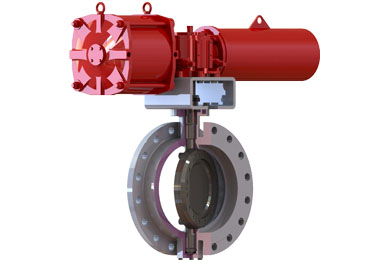
Butterfly Control Valve
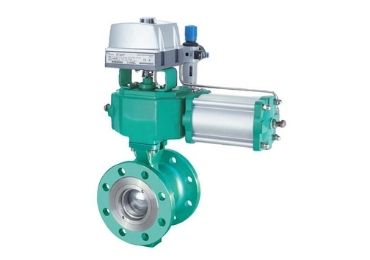
Segmented Ball Control Valve
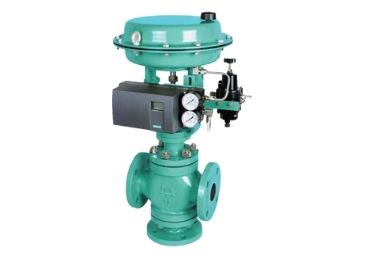
Three Way Control Valve
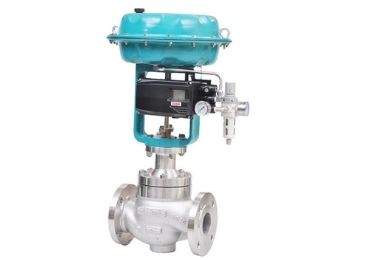
Two Way Control Valve
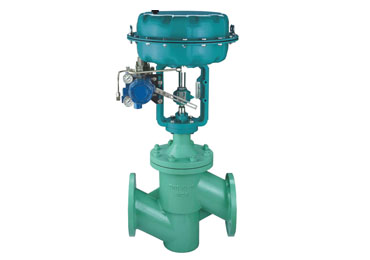
PTFE Lined Control Valve
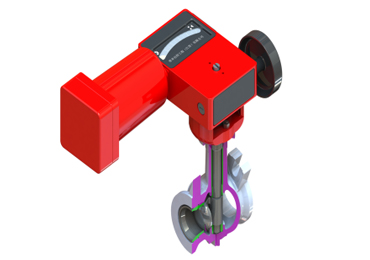
Rotary Control Valve
BCST your BEST Supplier for Pneumatic Actuated Valve
BCST is one amongst the leading reliable and stable pneumatic actuated valve manufacturers in China. If you’re searching for an experienced manufacturer for your next project, with strong technical background, professional team, and budget-friendly products, BCST is your most suitable choice.
BCST can provide different products supported customers’ requests. From packaging to delivery, you’ll receive BCST’s most detailed service. BCST’s technical team will provide you with professional guidance during usage or installation. With ATEX, ISO, SIL2, RoHS, and CNEX, BCST will provide you high-quality pneumatic actuated valve at a competitive price.
Drop us an email for your inquiry now!

BCST Pneumatic Actuated Valve Quality Control
- Technical software caculation
- Technical team meeting
- CAD drawing confirmation
Assembly
- Installation
- Calibration
- Chemical Analysis
- Mechanical Propery
- dimension Checks
- Visual Checks
- Non-destruction Examination
Hydrostatic Test
- Shell test
- Sealing test
- Leakage test
- Air test
- Function test
- CNC machining
- Visual checks
- Dimensional checks
- Liquid penetration test
Outlook Treatment
- Surface Polish
- Painting
- Visual inspection
- Thickness checks
- Visual checks
- Liquid penetration
- Test
- Hardness test
- Lapping
- Dimensional checks
Packing
- Marking
- Exported wooden box
Get the Latest Catalogue Now!
BCST Pneumatic Actuated Valve Application
Pneumatic Actuated Valve -FAQ
What is the troubleshooting issues in the pneumatic actuated valve and solutions, respectively?
The issues in the pneumatic actuated valve are simple to find while comparing from the electrical actuated valve. There are two main types of pneumatic actuated valve, so the solutions are also according to it.
- Double-acting pneumatic:
Troubleshooting issue | Suitable solution |
Unable to open or close the valve | · Checking the air pilot pressure of the system is more than the minimum pressure of the pneumatic actuated valve (mostly 90psi or 6 bar) · If the air pilot fits with the solenoid valve, then make it work manually to check its functionalities. · The valves need to be aligned along the flanges, and there is no need to bind them in the butterfly valves. · Check the power supply · Inspect that all the coils are receiving sufficient electric supply for moulding. · Usage of multi-metre if there is no open circuit of the coil |
Leakage of the valves during the first commissioning | · Clean the seat of the valve and conduct the test again · Adjusting the pneumatic actuated valve when it stops working is essential to close the valve completely. |
- Returning of the spring pneumatic:
Troubleshooting issue | Suitable solution |
Opening and closing of the valve is not possible | · A similar solution as double-acting pneumatic · Replace the pneumatic actuated valve with the spanner for checking whether there is any jamming or not |
Leakage of the valves during the first commissioning | · A similar solution as double-acting pneumatic |
What are factors to consider during the selection of a pneumatic actuated valve?
When selecting the right kind of pneumatic actuated valve for your application, there are a number of options available. But, each one of them has particular functionalities as it helps in understanding the differences. Also, selecting the right one according to the requirements. Following are the fundamental requirements to consider for choosing the pneumatic actuated valve:
- Medium: The first factor is the media flowing in the pneumatic actuated valve. Whether compressed air or liquid, make sure that the pneumatic actuated valve has compatibility with the flowing medium and pressure can easily pass through it.
- Configuration of the valve: Most pneumatic actuated valves work in multiple directions. It can be 2-way, 3-way or even 4-way. It counts the media ports that are active to perform the actions. 2-way valveàhas one inlet and one outlet. It depends on the actuated valve so that media flows through it or can even stop the flow. 3-wayà there is a third port named Exhaust port at the outlet side while blockage at the inlet. Typically, these valves are opening or can be for closing as well. 4-wayàfourth port corresponds to the Exhaust Port. It helps in controlling the multiple pneumatic actuated valves and cylinders. Depending on the actuation of 4-way valves, the pressure switches at INLET are from one port of OUTLET from the other.
- Flowing capacity and size of the pneumatic actuated valve: The flowing ability is the primary factor for selecting the pneumatic actuated valve. If the size of the valve is insufficient, it slows down the filling time, or an oversized valve can be a waste for the system. So it is better to calculate the maximum capacity of the application and the valve’s size. The capacity must be sufficient to handle the operations of the pneumatic actuated valve. It must fill up the volume for the downstream in a particular period. Most manufacturers provide a Cv valve that is a “flow coefficient”. It is a simple way of comparing the same size pneumatic actuated valve.
- Technique for actuating the valve: Various methods are available for opening or closing the valve. Some popular ones operate from the solenoid, mechanical, manual, or remote air.
- A detent or spring-return actuation: This is the returning method of the valve back in its actual state. Manufacturers name them to spring return and detent. It is your own choice whether you want the valve to come back in its form or remain as the pneumatic actuated valve.
After using these factors for selecting the pneumatic actuated valve, look at the performances and integration of the features present in it. Stay in touch with the manufacturer to know all these parameters.
What are the advantages and disadvantages of using a pneumatic actuated valve?
Advantages:
- The cost is low
- From purchasing point of view, it is the most economical actuated valve
- Works fast with high speed
- The whole cycle works at 100%
- Easy to operate and maintain
- Works for a more extended period
Disadvantages:
- The entire valve is large in size and heavy in weight, so sometimes it isn’t easy to install in some particular areas
- Pneumatic actuated valve needs an expensive pneumatic system for the air supply, and its maintenance is also important
- It doesn’t deliver accurate results because of the compression of the air
What are the differences between the pneumatic actuated valve and the electric actuated valve?
Pneumatic actuated valve | Electric actuated valve | |
Source of the power supply | · Supply of the air from 60 psi to 125 psi · Controlling of the solenoid valve is by DC or AC voltage | Only voltage supply of 120 AC, 24 DC or 12 DC. |
Sizes of the components | · Size of double-acting: 2.66″ X3.41″ X3.63″ · Size of spring return: 2.86″ X8.11″ X3.63″ | 7.70″ X6.45″ X4.75.”
|
Opening and closing speed | · Half second to one second | Six seconds |
Range of the temperature | · -20-to-350-degree Fahrenheit | -40-to-150-degree Fahrenheit |
Number of cycles | More or less than the 1000000 cycles when you are using a pneumatic actuated valve under the particular specifications | More or less than the 250000 depending on the application |
Options for the spring return | Mostly available | Mostly unavailable |
Industrial applications | · Food and beverages · Oil and gas · Automotive · Processing of power · Pharmaceutical · Treating and mixing of the chemical | · Helps in manufacturing · For washing the vehicles · Equipment for the water treatment · Availability for manufacturing services |
How can you size the pneumatic actuated valve?
The pneumatic actuated valve is available in different kinds, but the torque working for operating the valve is the same. Whenever you are sizing the pneumatic actuated valve, accuracy is very important. If the size is incorrect, it leads to a number of issues like excess torque for opening the value but being unable to close it. Or it can cause damage to the valve’s stem while working. So it is better to consider the torque’s requirements of the valve:
- Break torqueàIt is the force you need to begin closing the valve. It is also known as opening torque.
- Seating torqueàYou can also call it closing torque. It is the force that you need to settle the valve in the closing position.
- Running torqueàthis force is the requirement for maintaining the movement of the valve during the opening and closing position.
- Shaft torque at maximum levelàThis is the leading force that you need to apply at the stem of the valve before the occurrence of any deformation.
What are the functions of the fundamental valve actuator?
- The actuator must possess sufficient force to keep moving in unsuitable conditions. Moreover, fit it with the essential controls for the direction.
- Once the actuator is at the destination, the valve actuator remains there. In throttling applications, it needs the fluid’s power to keep the actuator at its place.
- Few kinds of valves need unique accessories for sizing the actuator to settle the torque and maintain the closing positions.
- There requires failure mode whenever any system fails. It depends on the application whether this mode is entirely closed or fully opening of the valve.
- Some of the valves need rotation 90 degrees or 180 degrees. The electrical actuators are entirely reliant on the application that requires more than 180 degrees. It has no limitation on mechanical rotation.
- You can regulate the speed of the actuator with the controlling elements of the circuit. While selecting the valve, the cycle rate is less than half of the basic cycle of the actuator.
How does the pneumatic actuator work?
The pneumatic actuator uses the air pressure to apply the force on the diaphragm to move the valve’s actuator and position it on the stem. You need to apply the air pressure at the bottom to lift the valve’s stem sliding upwards. It is against the force of the spring that keeps trying to push the stem downwards. The force is in the pound that the fluid generates while pressing the surface equal to the fluid’s pressure in units. Multiply with the surface area in the inches square. There are some handwheels in the pneumatic actuated valve that helps in positioning the valve if there is a failure in the air pressure.
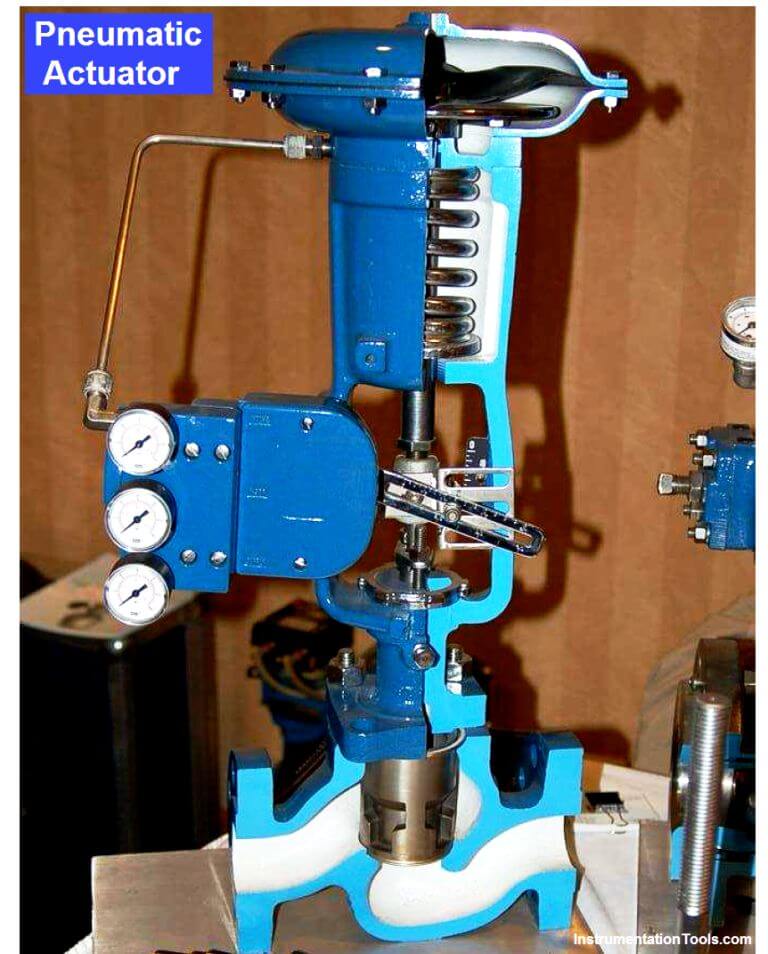
What are the two forms of pneumatic actuator?
The purpose of a pneumatic actuator is for actuating the control valves and present in two forms:
- Piston actuatoràare helpful when there is stroke in the diaphragm actuator is very short, or thrust is minimal. You apply the compressed air to the piston in the compact cylinder-piston actuator act single or multiple ways to manage the higher pressure level as the input. There are also cylinders for small volumes that work at a fast speed.
- Diaphragm actuatorsàkeep applying the compressed air to the flexible membrane known as the diaphragm. It keeps rolling in its whole area that remains during the actuator’s stroke. This type of actuator works in a single direction, acting directly or in the reverse direction. Serving directly is spring to retract, and reverse one is spring to extend.
What is reverse acting and direct-acting actuator?
Reverse acting (string-to-extend):
The working force derives from the air pressure that is compressed and applied to the diaphragm. Designing the actuator is so that force from the air pressure multiples to the area of the diaphragm. This resolves the exertion of the force by the spring in the opposite direction. The diaphragm keeps going upwards, and the plug opens when the spindle connects with the valve. The spindle moves the valve sufficiently by the stroke from completely closed to opening. To create more force, you need a large area of the diaphragm according to the range of the pneumatic actuator. This force helps in entirely moving the pneumatic actuated valve.
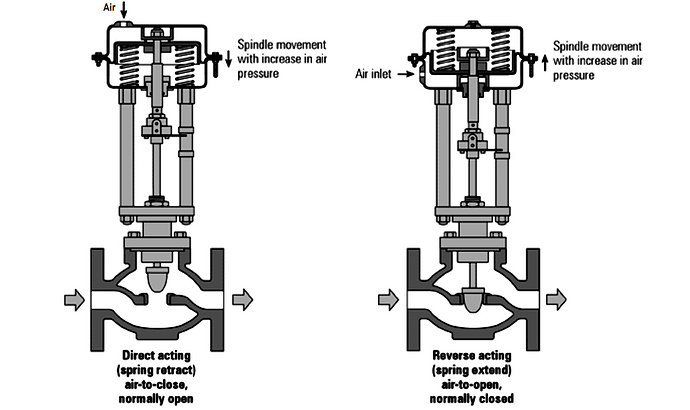
Direct-acting (string-to-retract):
The design of the direct-acting is along the spring and under the diaphragm. The supply of the air is on it towards the space. As a result, this increases the air pressure, and the spindle is in the opposite direction. This is in the direction of the reverse acting actuator. The valve’s movement depends on the design and type of the pneumatic actuated valve. There is also an alternative that is coupled with the control valve with the plug-in reverse acting. The selection between the reverse and direct-acting of the pneumatic actuated valve depends on the valve’s positioning. It can revert if there is a failure in the air pressure supply. You must consider the type of valve and pneumatic actuator.
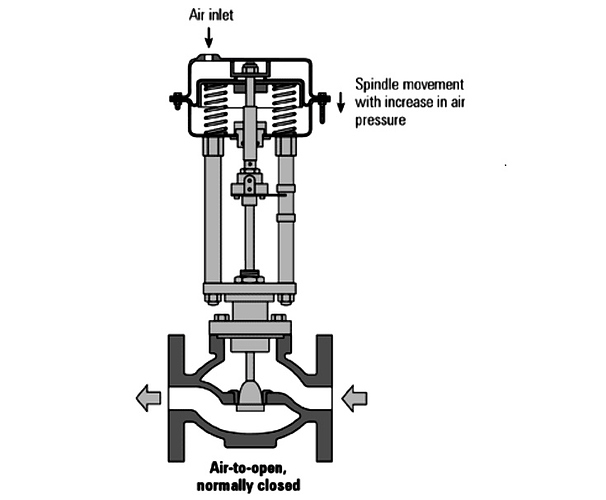
What are the benefits of maintaining the pneumatic actuated valve, and how to maintain them?
Benefits for the maintenance:
- This increases the durability and reliability of the pneumatic actuated valve that is already in-use
- It helps in identifying the problems before any damage occur in the pneumatic actuated valve, or any operation stops working
- It decreases the complete cost for the maintenance of the pneumatic actuated valve
- Shows the chance in making minor repairs that helps in reducing the significant shutdowns.
- Managing the appropriate timing for the large repairing
- Controlling and predicting the cost to assist in the budgeting
- This increases the lifespan of the pneumatic actuated valve
Maintenance tips:
- Must conduct the inspection externally on all the surfaces, including finishing the paints, knobs of the controls and stems of the valves.
- Remove all screws of the cover and grease them well to prevent corrosion
- Check that all the bolts, washers, nuts, and screws are tight enough to make the pneumatic actuated valve move ultimately.
- Keep monitoring the level of the oil.
- Make sure there is no moisture on the cover of the motor, and its examination is very important. Please don’t ignore it at any cost.
- Always analyze the previous performance of the pneumatic actuated valve and its data and benchmark according to the torque profiles.
- Monitor the working of the handwheel if it is the component of the valve. Supervise that it is making the valve move.
- Do check that the pneumatic actuated valve is working remotely as well

